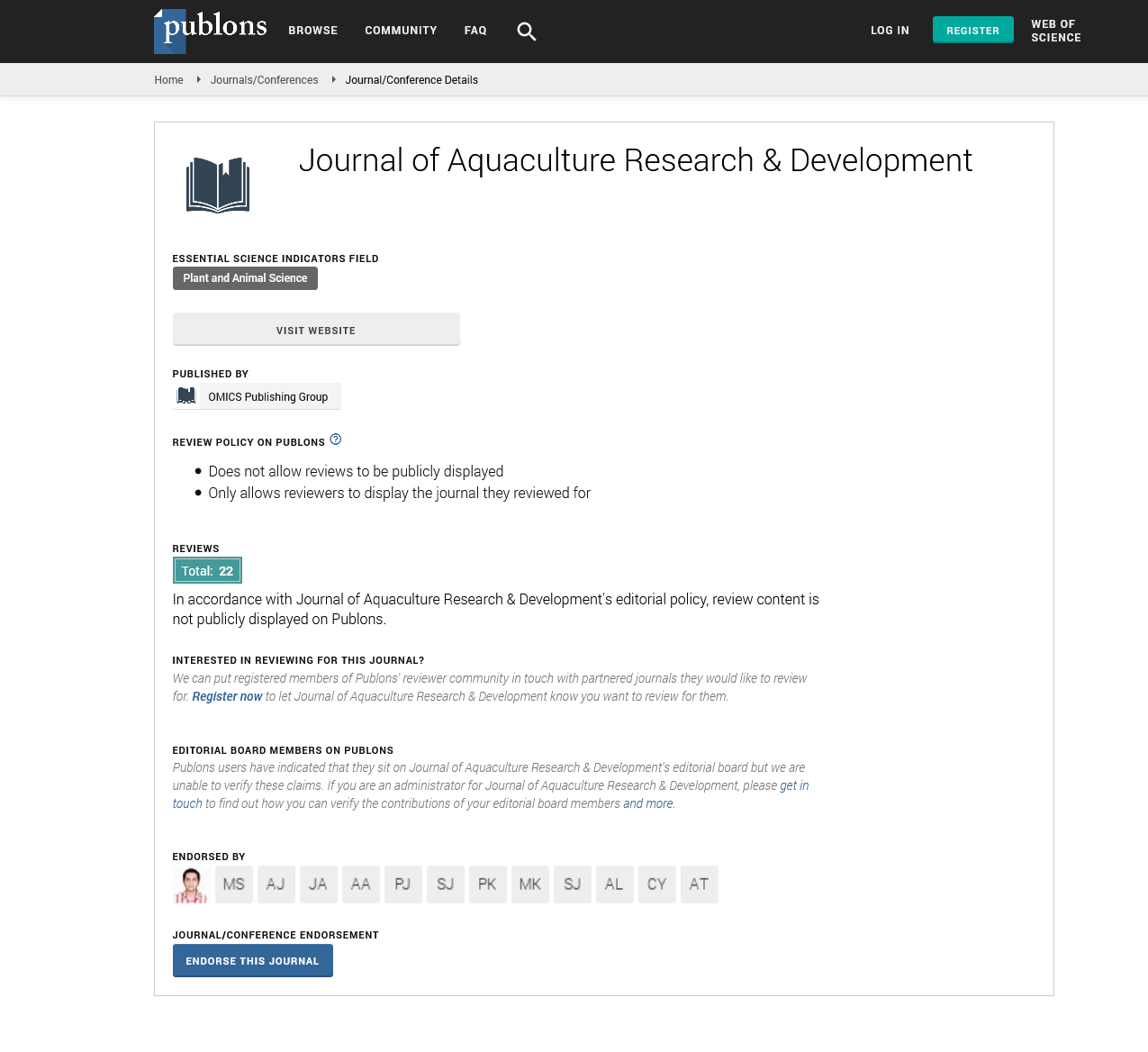Indexed In
- Online Access to Research in the Environment (OARE)
- Open J Gate
- Genamics JournalSeek
- JournalTOCs
- Scimago
- Ulrich's Periodicals Directory
- Access to Global Online Research in Agriculture (AGORA)
- Electronic Journals Library
- Centre for Agriculture and Biosciences International (CABI)
- RefSeek
- Directory of Research Journal Indexing (DRJI)
- Hamdard University
- EBSCO A-Z
- OCLC- WorldCat
- Scholarsteer
- SWB online catalog
- Virtual Library of Biology (vifabio)
- Publons
- MIAR
- University Grants Commission
- Euro Pub
- Google Scholar
Useful Links
Share This Page
Journal Flyer

Open Access Journals
- Agri and Aquaculture
- Biochemistry
- Bioinformatics & Systems Biology
- Business & Management
- Chemistry
- Clinical Sciences
- Engineering
- Food & Nutrition
- General Science
- Genetics & Molecular Biology
- Immunology & Microbiology
- Medical Sciences
- Neuroscience & Psychology
- Nursing & Health Care
- Pharmaceutical Sciences
Opinion - (2025) Volume 16, Issue 7
Small-Scale Aquaculture and Its Place in Food Security
Sora Kim*Received: 27-Jun-2025, Manuscript No. JARD-25-30062 ; Editor assigned: 30-Jun-2025, Pre QC No. JARD-25-30062 (PQ); Reviewed: 14-Jul-2025, QC No. JARD-25-30062 ; Revised: 21-Jul-2025, Manuscript No. JARD-25-30062 (R); Published: 28-Jul-2025, DOI: 10.35248/2155-9546.25.16.1013
Description
Aquaculture has become central to food systems across much of Asia, including Korea. While large-scale operations gain the most attention in terms of exports , kim argue that smaller farms deserve far more recognition. In many coastal and rural zones, these farms contribute to local food security, household income and even ecological management.
Small-scale aquaculture differs in many ways from industrial production. The focus is typically on a few species that are well suited to the local environment such as oysters, seaweed, or carp rather than high-value export items. These farms tend to use less feed and chemicals, drawing instead on existing ecological cycles. Waste from one species may be reused by another; for example, shellfish farms often improve water clarity and reduce excess nutrients. This not only cuts cost, but also supports the wider ecosystem.
However, small farms face many challenges. Access to quality fry, reliable feed and credit remains a barrier. Without formal training or support, many operators rely on traditional knowledge passed through generations. While this knowledge is valuable, it may not be enough to deal with emerging threats like heatwaves, salinity changes, or novel d iseases. Kim believe that public extension services must be strengthened, offering not only advice but also on-site support during emergencies.
Market access is another issue. Many small farms sell to local traders who set prices below fair value. Without cold storage or transport networks, these farmers must accept whatever price is offered. Kim suppo rt the creatio n of local cooperatives that allow producers to bargain collectively, pool resources and reach broader markets, including hotels, restaurants and retail chains. Even online platforms can play a role if rural connectivity improves.
Women and older adults are often heavily involved in aquaculture, especially in coastal villages. Their labour is frequently undervalued. Many do unpaid work during harvest, feeding, or sorting, while male family members handle outside sales. In my opinion, supporting women’s access to training, credit and land rights would make the sector more inclusive and productive. Better childcare, safer equipment and legal protections also matter.
Environmental sustainability is often better maintained by smallscale operations. Because these farmers live near the water, they quickly notice if pollution rises, fish behave abnormally, or new species invade. Their long-term interest is to maintain healthy conditions not only for their farm but for the surrounding waters. Policies that support community-based monitoring could use this observational power to help manage broader zones, even beyond the farm boundary. Of course, not all small farms follow best practices. Poor waste handling, overstocking, or use of illegal chemicals does occur. But instead of punishing small operators through harsh regulation, kim believe more effective results come from cooperative enforcement. Regular training, voluntary compliance programs and peer accountability encourage responsible farming more than fines or inspections alone.
Urbanization and coastal development put pressure on these farms. As tourism expands or new industries move in, space for aquaculture shrinks. Land-use conflicts are growing. Kim believe that governments must include small farmers in planning decisions, protecting their access to shorelines and water rights.
Aquaculture is often portrayed as a high-tech enterprise needing capital and scale. But in truth, many communities depend on small, low-input systems that are flexible and integrated into daily life. These systems may not produce large profits, but they feed families, stabilize incomes and maintain cultural practices. In that sense, they are just as important as high-output farms. Support for small-scale aquaculture is a smart investment not only in food but in social and environmental stability. Local farms provide more than seafood: they offer jobs, knowledge and resilience. Their protection and support should be a priority for those who care about sustainable food production.
Citation: Kim S (2025). Small-Scale Aquaculture and Its Place in Food Security. J Aquac Res Dev. 16:1013.
Copyright: © 2025 Kim S. This is an open access article distributed under the terms of the Creative Commons Attribution License, which permits unrestricted use, distribution, and reproduction in any medium, provided the original author and source are credited.

